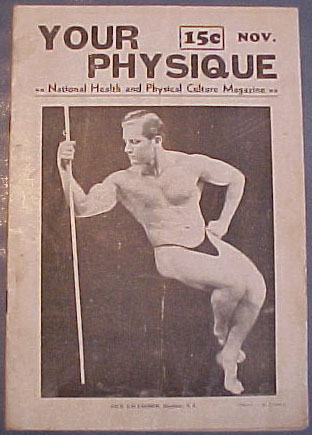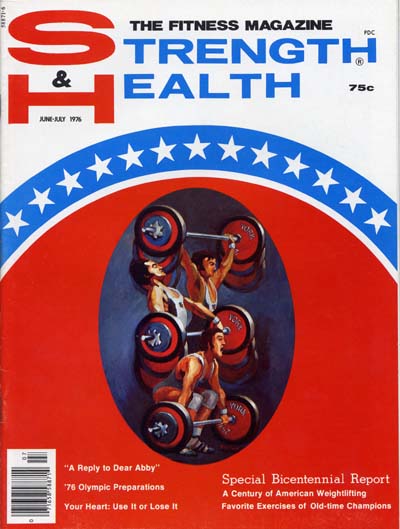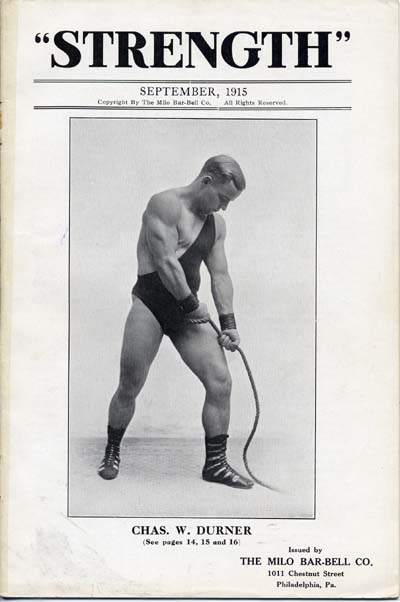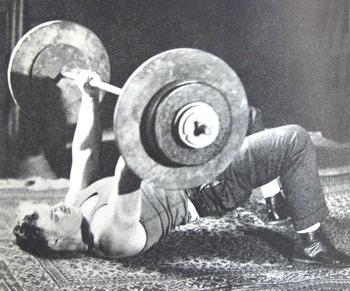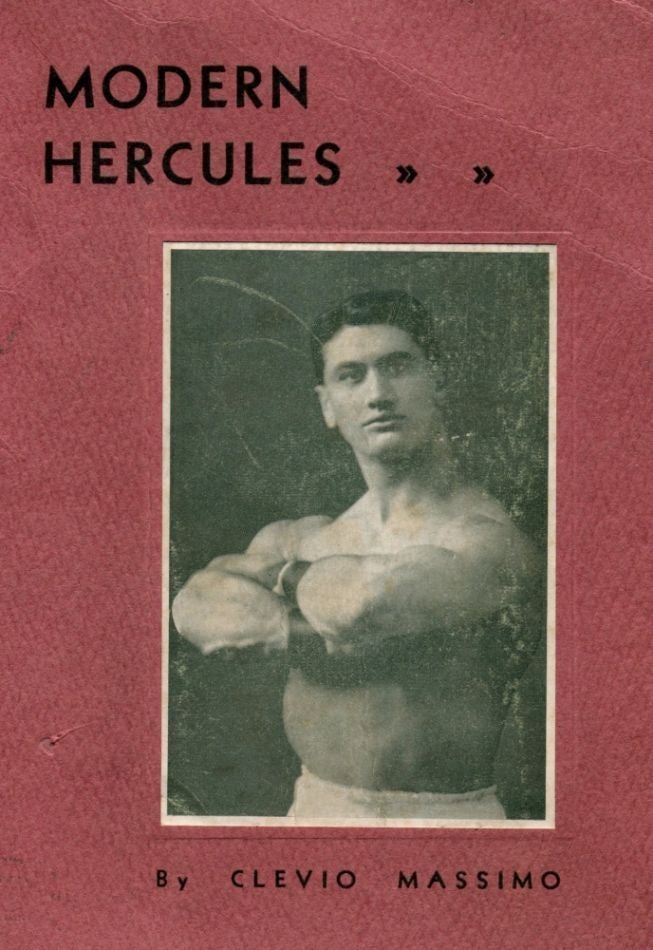Taken From This Issue (September 1968)
Larry Scott
Arm Specialization
by John McCallum (1968)
Last summer Ollie and I drove up into central British Columbia. The weather was terrific. We were driving along a winding highway with the car top down and the sun hot on our faces.
"Man," I said. "This is it. Smell those pine needles."
"Great spot," Ollie agreed.
I waved an arm towards the mountains. "Look at that country," I said. "Millions of acres of it."
"And just think," Ollie said. "You can only see what's on top."
"What's our next stop?"
Ollie studied the map. "Place called Earl's Cove. We get a ferry there."
"What time's the ferry?"
He thumbed through a pamphlet. "Two o'clock."
I looked at the speedometer and then at my watch. "We'll have about forty minutes to kill when we get there. We'll pop into a pub and have a nice cold beer."
"Great." Ollie leaned back and closed his eyes. "Earl's Cove, here we come."
Fifteen minutes later we rounded a bend and I hit the brakes. There was a sign nailed to a tree. It read "Earl's Cove." The road ran down a steep hill to a beat up old ferry slip. There was one car waiting by the slip. Other than the car, there was no sign of life. No houses, no taverns, no nothing.
"Well," I said. "So much for the cold beer."
"That's for sure," Ollie said. He looked around. "Even Earl left."
I peered through the windshield at the other car. "Ollie," I said. "Do my tired old eyes deceive me?"
"How's that?"
I pointed at the other car. "Look over there and tell me what you see."
Ollie looked. "I see," he said slowly, "I see a young man sitting on the back bumper of a car parked in the middle of nowhere doing concentration curls with a dumbbell."
"That," I said, "is what I thought I saw."
We drove up behind the other car, stopped, and got out. The young man looked up and grinned. Sweat was running off his forehead. His arms looked like barrels.
"Nice day for it," I said.
He put the dumbbell down.
"Keep going," I said. "Don't let us stop you."
"That's okay," he said. "I need a few minutes rest anyway."
"Sorry," I said. "I didn't mean to stare. It just seemed odd to see someone lifting weights away out here."
"That's all right," he said. "I'm used to being stared at."
"What exercises do you do?" I asked him.
"I do these," he said. He did a couple of curls. "And this." He did a few triceps extensions to show me.
I pointed at the dumbbell. "Is that all the equipment you use?"
He put the weight down again. "On, no. I got a regular gym at home. This is just for my in-between days."
"How do you mean?"
"Well," I said. "I gotta drive up here three days a week, you see. So I take a regular workout at home on the other days. I exercise everything but my arms. Then, on the on days I'm driving, I exercise my arms while I'm waiting for the ferry."
"Well," I said. "Nobody'll ever accuse you of wasting time."
Ollie walked over and admired the young man's arms. "With muscles like that," he said, "nobody'll ever accuse you of anything."
The young man started curling again, and Ollie and I sat in the shade and watched. Two more cars pulled up and the people got out and looked at the muscles with their mouths hanging open and their eyes sticking out. Finally the ferry steamed up and nudged into the slip. We got back in the car.
"You know," Ollie said. "That's the most amazing thing I've ever seen. Imagine working out under those conditions."
"The only thing more amazing would have been if he'd been working on anything but his arms."
There's no doubt that arms are the most popular muscle group with the average bodybuilder. There's also no doubt that very few bodybuilders ever succeed in building the kind of arms they really want. Most of them fail for a couple of good reasons.
One reason is insufficient training for the rest of the body. You can't work just the arms alone and expect really good results. The biceps-triceps combination will never get very far ahead of the rest of the muscle groups.
You must provide stimulation for the arms by using a proper training routine for the rest of the body. Your arms just won't get very big without it.
A neighbor of mine has a boy about sixteen. Last summer the kid decided he wanted big arms. His father got him some weights and he started training. After about six months he came to see me.
"Look," he said.
He had a T-shirt on. He flexed his arms.
"What about it?" I said.
"Not very big, are they?" he asked.
"Henry," I said. "I've seen bigger muscles on extension cords. Now, what do you want?"
"Help," he said. "I been exercising faithfully for six months now and still ain't got big arms. They get harder," he added, "but no bigger."
"What exercises are you doing?" I asked him.
"Curls," he said. "And French presses."
"Good," I said. "And what else?"
"What else what?"
"What other exercises?"
"How do you mean?"
"What other exercises do you do?"
"None," he said. "Just curls and French presses."
"That's just for the arms," I told him.
"Certainly," he said. "I don't wanta get lumpy all over like you. I just want big arms."
I gritted my teeth at him. "Henry," I said. "I oughta put a lump on your head. You'll have to build muscle all over or you won't put much on your arms. It's as simple as that."
I talked to him for a while, and finally convinced him to add to his program. He added breathing squats, bench presses, and rowing, and his arms grew an inch and a half in the next three months.
Another reason for poor progress is poor nutrition. You are what you eat and there's no getting around it.
Protein builds muscle. I thought every reader of Strength & Health knew it, but I was wrong.
A fellow came to see me a couple of months ago. He wasn't adding muscle fast enough. I asked him about his diet and he told me.
"That's not enough," I said. You've got to eat more."
He said he would, and six weeks later he came back.
"Any progress?" I asked him.
He shook his head. "Can't understand it."
"Are you eating good?"
"Sure," he said. "I added a meal at bedtime."
"What is it?"
Prunes," he said. A great big dish of prunes."
We're going to specialize on the arms for a while. We're going to bring them to a relatively high state of development. Relative in the rest of your body, that is.
After the deltoid, pectoral, abdominal combination, are the next most impressive region. Big muscular arms are indispensable to a herculean body. Actually, arms are not difficult to develop if you go at it properly. You can get good results from this program if you want. Give it all you've got and you'll improve your appearance 100%.
Your arm specialization will be complicated by the same problem you had with the deltoid, pectoral, and abdominal program. That is, you don't want to lose any definition. So you won't be on a straight bulk program. Not yet. Every ounce you add will have to be pure muscle. The problem will be to not add any fat at all.
We'll solve the problem like this:
The training for the rest of your body will be geared to maintain definition as well as build muscle. You'll use a modified P.H.A. program and some light running.
Do the following on Mondays, Wednesdays, and Fridays:
1) Seated Press Behind Neck: 8 reps
2) Squats: 10 reps
3) Chins Behind Neck: 8 reps
4) Twisting Situp: 20 reps
5) Incline Dumbbell Press: 8 reps
6) Calf Raise on Machine: 15 reps
Do the program in P.H.A. style.
Do six sets of the program. Use a light weight for the first two sets as a sort of warm-up. Use all the weight you can handle for sets three, four, and five. Drop the poundage down for the sixth set to cool off.
As soon as you finish the last set, go for a run. Run about two miles at a nice relaxed pace. You should be able to jog two miles in less than twenty minutes by now.
Don't neglect the running. It'll keep the blubber off your waist and hips better than all the situps you'll ever do.
Do the arm specialization program on Tuesdays, Thursdays, and Saturdays. Do NOT do the arm work in P.H.A. style. Use the regular set system. Like this:
1) Curls: 5 sets of 7 reps. Do the curls with a barbell, Use a heavy enough weight so that you have to cheat a bit on the last two reps.
2) Parallel Bar Dips: 5 sets of 8. Keep your body as upright as possible. Tie weights around your waist for added resistance.
3) Incline Dumbbell Curls: 5 x 8. Strict style. Make sure the arms straighten right out at the bottom. Raise your elbows high at the top of the exercise.
4) French Press on Bench: 5 x 8. Use a narrow grip and lots of weight.
5) Concentration Curls: 5 x 10. Light dumbbell. Try to cramp your biceps.
6) Triceps Extension on Lat Machine: 5 x 10. Strict style. You should be able to really pump on this one.
Give the program a real try. Don't neglect your running and don't skimp on the supplements.
Get your arms as highly developed as possible and you'll be in shape for the advanced bulk and power stuff to come.






